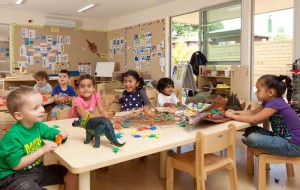The rapidly changing early childhood education sector is bringing new opportunities for commercial property investors, a sector specialist says.
Colliers International Investment Sales Broker Peter Kermode says childcare centres offer strong fundamentals at a relatively affordable price point, making them attractive to smaller investors like family trusts.
However, the secondary market is virtually non-existent because childcare centres are sought after and tightly held.
“There are few options for investors, other than to purchase new developments,” Kermode says.
“Fortunately, there is new development taking place due to Auckland’s growth and the sector’s rapid transformation in recent years.”
Latest Ministry of Education figures show the number of early childhood education operators in the Auckland region has grown almost 35 per cent in the last decade, which is bringing more diversity into the market.
The number of spaces available to children has increased 88 per cent over that same period, Kermode says.
Despite this increase, occupancy rates across the Auckland region remain above 80 per cent, according to Ministry of Education figures.
“There are now 1,403 services accommodating 70,489 children.
“It’s a huge sector, and it’s continuing to grow.”
Kermode says ownership models are changing rapidly.
“The childcare sector has historically been very disjointed, with a large number of smaller operators running perhaps one or two early childhood centres each,” he says.
“These centres are usually family-owned businesses and are often operated out of converted bungalows or villas.
“Most are licensed for a modest number of children – typically between 30 to 35.”
While there continues to be a market for these smaller centres, the market has shifted towards much larger operators, running multiple centres licensed for far more children.
Kermode points to the likes of Evolve Education Group and BestStart Educare.
“These larger operators are developing purpose-built early childhood centres that typically accommodate between 80 to 120 children.
“Some are even large enough to accommodate 200 children.”
The driving factor is economies of scale, Kermode says.
“Designing a new centre from the ground up brings efficiencies in staffing and fit out,” he says.
“Open spaces make it easier to supervise children, while amenities can be shared between different age groups.
“Modern, purpose-built centres also feature abundant natural light and good ventilation. That makes them very attractive to parents, which in turn is good for business.”
Many of Auckland’s new early childhood centres are being built in the city’s expanding outer suburbs, Kermode says.
“Areas like Westgate and Hobsonville have abundant land and fast growing populations, making them ideal for childcare development.”
Greenfield developments are particularly attractive, Kermode says.
“It’s easier to get resource consent than in an established suburb, where objections from neighbours can be an issue.
“New development sites also tend to be larger, allowing for economies of scale, and face less competition from residential developers and buyers.”
Kermode says many childcare operators are choosing to lease rather than own these new developments.
“Businesses in growth mode want to invest capital in further expansion and/or improving their existing facilities, rather than tying it up in property,” Kermode says.
“That creates opportunities for investors to secure a relatively affordable property with strong fundamentals.”
Kermode says childcare centres are a great option for smaller investors looking for a long-term passive investment.
“They offer a pretty unique proposition for investors who don’t have access to the $5 million or more typically needed to invest in a commercial property with multiple strong fundamentals.
“Childcare centres are higher yielding than residential investments, and require a lot less management. Typically, the tenant pays all the outgoings.”
Kermode says investors can also take confidence from the childcare sector’s long-term stability.
Childcare centres benefit from very low rates of obsolesce, he says.
“Children’s needs won’t change much over time, while demand for childcare is likely to remain strong, as Auckland house prices necessitate dual income families,” Kermode says.
“There’s also a lot of business goodwill attached to the properties and buildings that childcare centres occupy.
“The resource consent to run a childcare centre stays with the real estate, not the operator. If an operator moves out, there’s usually three or four more lining up to take on the lease.”
Kermode says converted villas and bungalows can easily be converted back to residential use if needed, which also helps to reduce rates of obsolesce.
“I’d urge anyone looking for a solid commercial investment at a relatively affordable price to consider an early childhood education centre.
“The risks are low and the benefits can be tremendous.”



